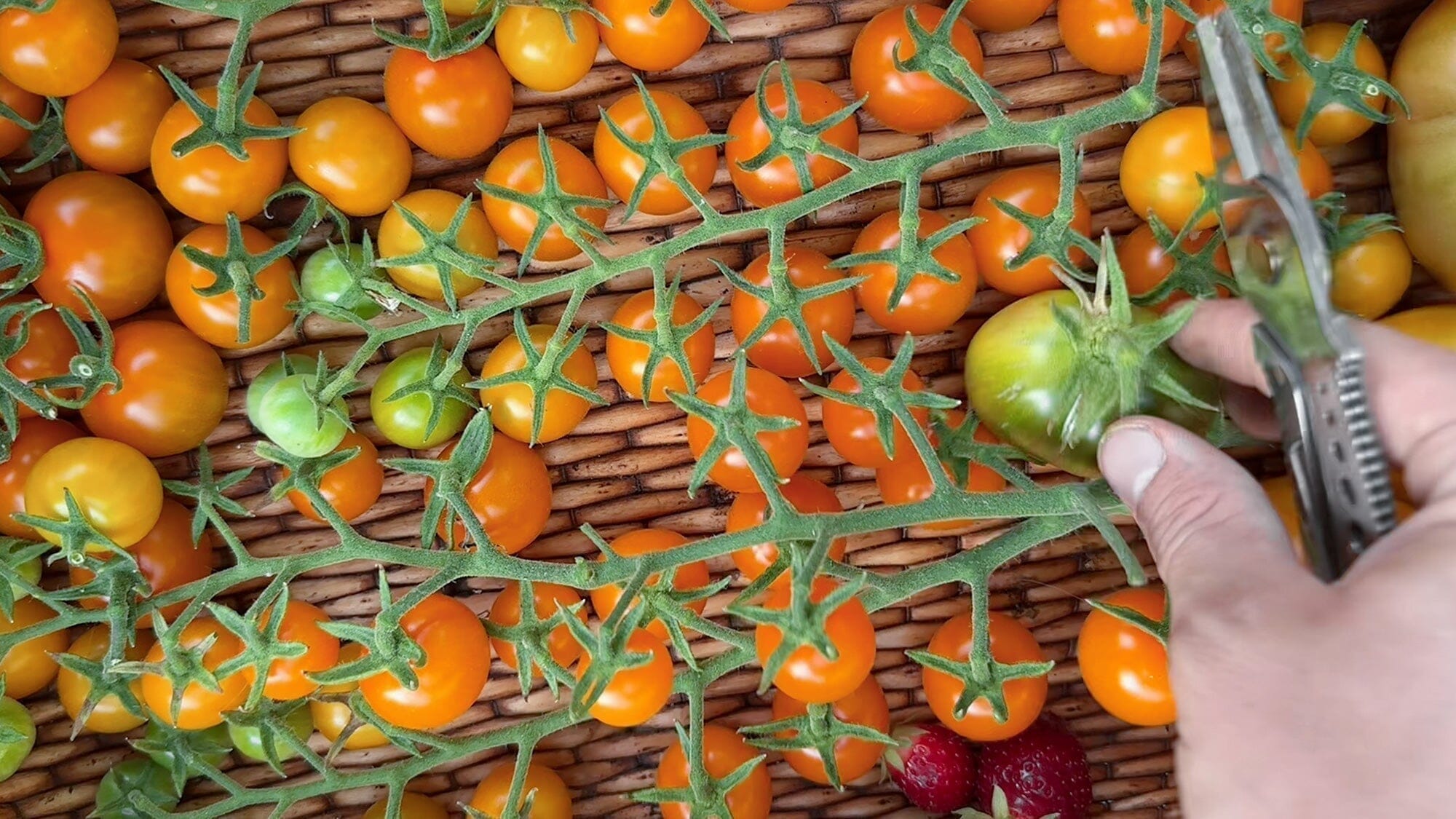by Jenevieve Hubbard of Wild Flora
The Kinlands family farm is a place I love to be. My first experience there was spent arranging spring florals inside and around the beautifully rustic marketplace. To be inside felt like a step away from the brightly lit overstocked aisles of modern consumerism and back to a time when produce was grown by a neighboring farm, the bread baked by hand, and the eggs laid fresh.

So, I was especially excited to introduce this beautiful place to my friend Lexi Marie and her new babe, who sat content in his stroller, as we photographed golden hour portraits of a wild foraged wreath.
Apropos to The Kinland’s consciousness of the land, the season of winter wreaths is often a time for me to slow down from the hectic summer months of events. It’s an opportunity to look at what is available from the garden and put together a piece of art that reflects the abundance around me.

In the corner of my garden is an overgrown grapevine. It’s one of the few plants in our arid landscape that thrives with no additional water or care. Every winter, the leaves and grapes fall away to reveal the most beautiful sun-baked canes. Trimmed right off the vine, these canes are pliable and provide a beautifully naturalistic armature for my wreaths.
I trim the vines long with a sharp pair of pruners and remove leaves and other debris with a good pair of garden shears. The vines can be wound around themselves and secured with a bit of brown bind wire.

I have gathered a few varieties of foraged evergreen branches, including pine, wild tamarisk, and berried juniper. I prefer to use a small timber saw to remove select branches from trees. Cutting them at an angle next to the main branch will ensure trees stay healthy and happy minus a few branches. I also have a basket of pinyon pine cones that I have collected on a camping trip to add some finishing touches.
I like to keep my wreaths simple: delicate and naturalistic. A grapevine aids in that simplicity and provides a beautiful backing that can hold its own. From there, I build with more delicate pine branches and ethereal tamarisk. I place each branch on the wreath one at a time and secure it in a few places with bind wire to take the shape I’d like. To that branch, I will layer something with opposing colors and textures, so each branch holds its own space and attention.


I will leave much of the wreath backing bare so the eye will travel around the quiet of the simple forms of grapevine and tendrils, then rest on the assortment of textures and colors in the focal point at the bottom left. As a finishing touch, I add a bit of the unexpected in one wild vine that seems to have escaped the rules of the form but adds balance in its simplicity.
My wild foraged wreath will last up to a month in a sheltered spot on my door as the evergreens have been cut fresh and soaked overnight. During dryer winters, I mist them periodically with a bit of water to keep them fresh.

Now that I've set the intention, go outside, gather what you find,
and build a wild wreath of your own.
ETHICAL FORAGING
Foraging is a beautiful way to deepen our connection with nature and our local environment. Please remember to follow these rules to ensure an ethical and sustainable foraging practice.
>> Always ask permission from a landowner before foraging. Never intentionally remove plants, rocks, fossils, etc., from national parks or wilderness areas.
>> Never take more than you need.
>> Do as little damage as possible to the plant and the surrounding environment.
>> Leave enough for the plant or plant population to easily recover.
ABOUT
Jenevieve grew up in a native village along the Yukon River in the wilds of Alaska where she spent much of her childhood exploring the forests, rivers and wild iris flanked inlet of the Pacific Ocean. She started her career in floral twenty years ago, first as a horticulturist at Denver Botanic Gardens, then as a florist at a little flower shop in downtown Denver, and another ten years in fine art and graphic design before returning to floral.
Wild Flora specialize in locally and sustainably sourced floral design for weddings & events in the Rocky Mountain West and Pacific Northwest.



